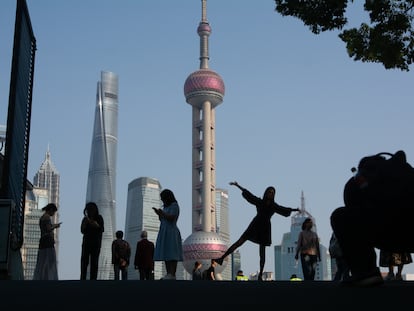Canada first: From Montreal to Toronto by train
Donald Trump’s threats have led Canadians to embrace domestic tourism, hop on the train and explore cities full of history, museums, food scenes and great views
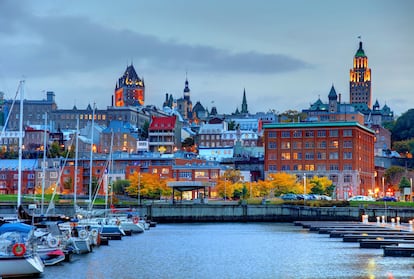
The great Montreal writer Mordecai Richler once defined Canada, in the voice of his foul-mouthed, generous alter ego Barney Panofsky, as “a cloud-cuckoo-land, an insufferably rich country governed by idiots, its self-made problems offering comic relief to the ills of the real world out there, where famine and racial strife and vandals in office are the unhappy rule.” It’s tempting to imagine how Richler — who was also or rather, above all, a phenomenal polemicist — would have taken the very real ills occasioned by the tragicomic return to the White House of Donald Trump, with his tariff threats, insulting treatment of the prime minister and attacks on Canada’s sovereignty. Playing the contrarian was the writer’s favorite sport, but surely even Richler, who died in 2001, would have agreed with the overwhelming majority of his fellow Canadians in not wanting to become the 51st state of the United States.
Trump’s bravado has reawakened a nation’s dormant pride. Such has been the case for the Montreal-born philosopher Daniel Weinstock, a “committed anti-nationalist.” He is still surprised over how “proud to be Canadian” he is, which is why he welcomed us into his home in the Monkland neighborhood of the largest city in Quebec province wearing a T-shirt that read “Elbows Up,” a slogan that Canadians have reappropriated from hockey legend Gordie Howe as a rallying cry for resistance against their abusive neighbor.
Many Canadians, notes the national pride of Canadian literature Margaret Atwood, have canceled trips south, where they have customarily gone in search of a little sun. “Expect an uptick of Canadians in Mexico and the Caribbean,” Atwood warned us with her with her customary irony in an email just as our train journey through Quebec and Ontario brought us to Toronto. The author of The Handmaid’s Tale was writing from Mexico City, where she has spent long periods since before Trump came to office. She’s right: Canada usually heads the list of countries that send the most tourists to the United States (nearly 21 million in 2024, according to the U.S. Travel Association), but its numbers have fallen by 22% in recent months. The new resident of the White House has also compelled his northerly neighbors to resume a forgotten habit: vacationing in other Canadian provinces. “Isn’t it fabulous that we are rediscovering our country? It’s the law of unexpected consequences: Trump has pushed us to get to know each other. Canada is experiencing a renaissance,” says the grand dame of mystery novels Louise Penny, whose successful Francophone detective Armand Gamache has plunged millions of readers into the criminal side of Quebec, the belle province (beautiful province).
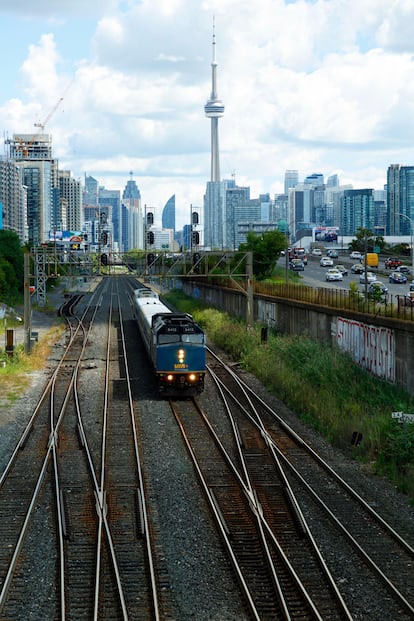
His fellow Canadians also know Richler as having said that his home was Montreal — and that everything else is geography. The country does indeed possess immense, picturesque lands (as fans of the new Netflix series North of North, which takes place in the Arctic territory of Nunavut, can confirm) that are largely inhospitable. Canada is 20 times larger than Spain, but has eight million fewer inhabitants, and 80% of them live along the U.S. border.
It’s a nation overflowing with natural charms, but this trip doesn’t focus on those. Instead, it proposes an urban route aboard the trains of VIA Rail. They’re not particularly fast or comfortable, and it is possible that people will look at you funny when you tell them you’re planning on covering the 340 miles that separate Toronto from Montreal in five hours instead of the 75 minutes the trip would take on an airplane. But until the advent of high-speed rail, something that officials promised in February, going by train feels like quite the civilized luxury, much like the very idea of taking public transportation — a rare option in North America — to travel from Quebec, the heart of French-speaking Canada that has resisted English dominance for three centuries, and Toronto, the country’s economic powerhouse. The train also stops in the vibrant city of Montreal and in the nation’s capital, Ottawa.
In addition to the charms of these cities, and animated conversations about the only possible subject of the day (yes, Trump), the trip featured memorable landscapes that unfurled just beyond our train window.
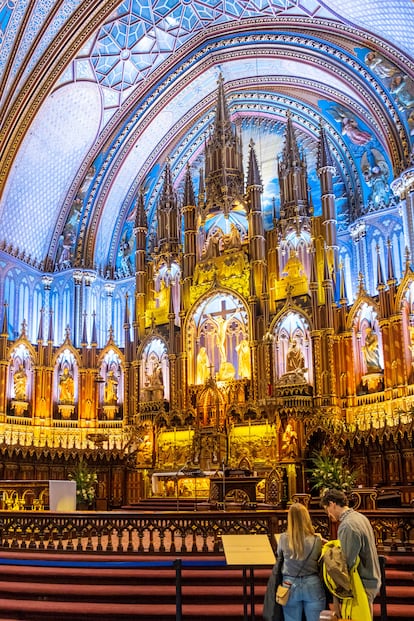
1. “Bonjour hi, Montreal!”
French and English identities — in addition to those of Indigenous people and immigrants, who have been coming non-stop since the founding of Canada — define the country, and nowhere do they co-exist with greater ease than in Montreal, where the standard greeting, “Bonjour hi”, serves to determine whether the conversation will proceed in French or English. In reality, the city’s mosaic goes far beyond its two languages (only one of them, French, has been official since 1977.) The spirit of Montreal is in large part the sum of the communities that flourished here throughout the 20th century: African, Asian, Italian and more recently, Hispanic. Here too are the Portuguese and Jewish communities, diluted though they may be after decades of mixing, but which still characterize Plateau and Mile End, lively neighborhoods with secondhand stores, bookshops, artisan beer, modern apartment buildings and the inevitable aroma of gentrification that comes with all the above.
In Montreal, unlike most other large cities in North America, it’s possible to walk the streets as if decades of neighborhood gentrification had never happened. You can eat smoked meat at Schwartz’s, a Jewish deli that is deservedly famous despite its deceptive appearance as a tourist trap, and pork at Wilensky’s, where everything is so old-fashioned that they even make their own cola drinks. You can order bagels to go at St. Viateur or Fairmount, two mutually exclusive experiences because “you’re either a fan of one or the other,” warns the Spanish journalist Irene Serrano, who has been a Montreal resident for 14 years. Or go see jazz at Upstairs, where the menus are written on seminal album covers, though it is best to have eaten before hand. One can also listen to live punk at Casa del Popolo, home to a leftist atmosphere and vegetarian cuisine.
Music is one of the trademarks of the city, which has been home to great artists like Arcade Fire, Patrick Watson, Baul Bley, and most notably, Leonard Cohen. Montreal has dedicated two murals to the singer, neither of which are located in Parc du Portugal, the plaza where lived in a spartan home until his death in 2016. There, the street art’s star is singer Amália Rodrigues (a fact that one suspects the man behind Hallelujah would not have found unpleasant). The grand lady of fado watches from above the hustle and bustle of Boulevard Saint Laurent, an artery that cuts through the city. Here stand bookshops (the spectacular Gallimard and, not too far away, The Word, with its good prices and a large selection of secondhand books in English), film houses (the charming Cinéma Moderne, which shows films by local auteurs such as Xavier Dolan and Denis Villeneuve) and gourmet food (for example, in the lively Café Olimpico). Like many cities, Montreal is experiencing a culinary golden age, and Quebec’s hearty cuisine has long been more than just poutine, still its most popular dish, comprised of French fries, gravy, cheese, bacon and shallots. Note, if you will, the delicacies served at the modern St. Denis and the cocktails at the Big in Japan speakeasy.
To immerse oneself in the justifiably famous gay Montreal, there’s The Village neighborhood, and to be spirited away by the city’s 1976 Olympic past, one need only look for the reference point of the great stadium’s tower, rising from a trampoline-looking building that locals refer to as “the Big O”.
The tour of Cohen is one of the most popular among visitors to Montreal, who walk it while swaying to his songs or listening to the audio guide recorded for public radio by singer-songwriter Martha Wainwright and her brother Rufus, another local celebrity. The tour goes from the house where the musician was born in the Jewish neighborhood of Westmount to Moishes Steakhouse, where he liked to have lunch; and from his alma mater, McGill University, where protests against Israel’s war on Gaza continue to rage, to the Museum of Contemporary Art.
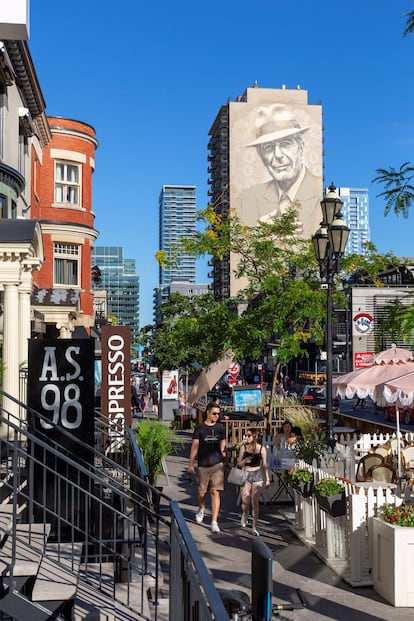
Montreal’s Museum of Fine Arts is another of the city’s great creative hubs, and often has spectacular temporary exhibitions that make up for any disappointment stemming from having to go to a mall to see them, a diminutive version of the MAC having been erected in just such a structure while the museum’s original site undergoes renovation until 2028. The building is located alongside the Place des Arts, a performing arts center whose current exhibition reminds visitors that, in addition to health services, Canadians would lose out on public support for culture if U.S. annexation were to take place.
The largest of the Cohen murals appears to be an homage to the spectacular views of Belvedere Kondiaronk, located atop Mount Royal, a vantage point from which, in the distance behind the skyscrapers of Downtown, peeks the Saint Lawrence River and picturesque Old Montreal can be glimpsed, with its cluster of narrow streets with four-century-old buildings and tourist restaurants that lead down to the port. There, one last surprise awaits: Bota Bota, a spa that began on a barge at the dock and later expanded onto dry land with a garden featuring pools. Visits are recommended during the harshest days of winter.
2. Quebec, the walled city
Four hours by train from Montreal, perched upon the majestic Saint Lawrence and steeped in the history of the first European settlers, lies picturesque Quebec, a UNESCO World Heritage Site since 1985, and a fortified anomaly of a city.
The train passes through the region of the large aluminum and steel factories, which have been dealt a blow by Trump’s tariffs, before arriving at the community founded by Samuel de Champlain in 1608 as a fur trade outpost. A century and a half later, the French quickly lost the Battle of the Plains of Abraham, which is commemorated by a placid park housing a museum that recreates the events via audiovisuals, as dispiriting as they were. The English attacked, the French surrendered in a little over 30 minutes, and so began the colonization and continued culture clash at the heart of Canadian nationalism.
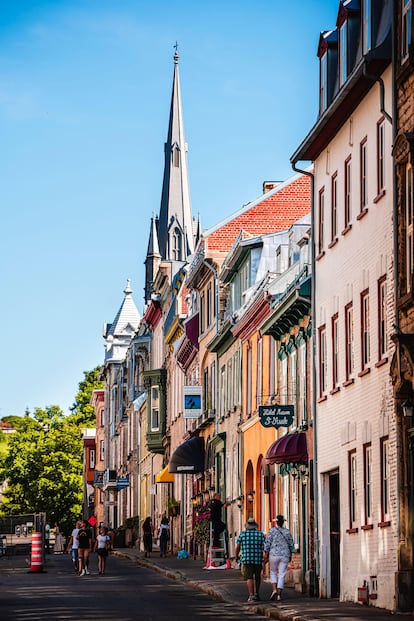
Upon its founding, which didn’t take place until 1867, Canada was made up of four provinces: Ontario, Quebec, New Brunswick and Nova Scotia. On the other side of the border, the U.S. Civil War had just ended, and many of the politicians and promoters of Canadian annexation at the beginning of the war took up the idea again, writes historian Robert Bothwell in Your Country, My Country, an entertaining history of the coexistence of two countries that are so different, and yet so similar. Bothwell explains Canada’s emergence as reaction to the “American acquisitive zeal” that Trump has revived. New threats from Washington have made Quebec’s sovereignty movement appear to be in urgent need of a new referendum. They are down, but not out, says Pascal Paradis, a representative of the revived Parti Québécois in the provincial parliament, speaking in a café located outside the city walls. “Trump will pass, but the independence movement will remain,” he says. Paradis describes the Francophone culture as “a minority in an Anglophone ocean with the cultural empire of the United States as its neighbor.” Following that same logic, Louise Penny, the great crime novelist, defines Quebec’s English speakers as “a minority within a minority”.
Penny set Bury Your Dead, one of her best works, in Montreal. Its plot, of course, focuses on a murder. The scene of the crime is no other than the Morrin Center, which was originally a prison and today, is one of the most beautiful (English-language) libraries in the world. Gamache, her detective with gourmet tastes, also visits some of the walled city’s other key sites: the Château Frontenac, the self-described “most photographed hotel in the world,” the mountain railway that brings one to it, the port, the Champlain statue, the cafés and bakeries around the Place d’Armes, the Cantonese Restaurant Wong…
In the city’s older section there is an alleyway, Rue Saint-Paul, with a row of quality antique shops and a store called Artisans Canada. It is one of those establishments hawking local products perfect for souvenir shopping that the emergence of the Made in Canada movement (Fait Au Québec, in its local incarnation) has suddenly made all the more relevant. Once again, Trump is to blame.
And there is life outside Old Quebec, of course. For example, in the Saint-Roch neighborhood, with its Japanese restaurants, vivid nightlife scene and rooftops. Also, on the Rue Saint-Jean, where at the top of some very steep stairs, one may purchase collectible vinyl (at CD Mélomane) and have a beer across the street at Le Sacrilège, one of those surprisingly decorated bars of a breed that seems nearly extinct.
Political conspiracies in Ottawa
Like any good administrative capital, Ottawa could demand more of itself, but as in the rest of its peers, inhabitants will try to convince you that life there “is not that boring.” Politics are always present, as the skyline of the city (located two hours by train from Montreal) is dominated by the Parliament building. Since the pandemic, the seat of government has attracted a motley crew of conspiracy theorists who will tell anyone who listens horror stories featuring mind control delivered via vaccines. It’s best to politely avoid them and head straight for the tower: you can climb it for free (with a reservation) and contemplate the layout of a city whose great virtue is that it is neither Toronto nor Montreal, this being the reason why Ottawa was chosen to be the nation’s capital.
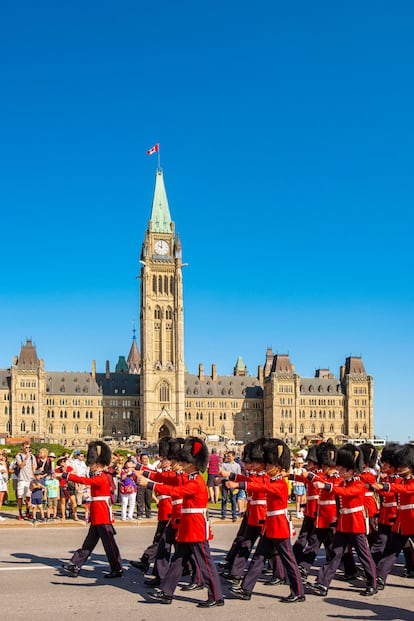
For a taste of Cold War anxiety, head to the outskirts of the city to visit the Diefenbunker, which has been kept intact since the days when Ottawa feared a nuclear attack from the USSR. To experience fast-paced parliamentary life, as it were, the politician-favorite French-style bar and restaurant Metropolitan is a good place to go now that Trump has added a little spice to lawmakers’ lives, and the golden rule of Canadian politics, as coined by Ottawa-based commentator Paul Wells, has fallen by the wayside: “For any given situation, Canadian politics will tend toward the least exciting possible outcome.” If you have loftier gastronomic aspirations, make a reservation at Riviera for creative Canadian cuisine inside a former bank.
Every winter, Ottawa features the largest ice-skating rink in the world, with a nearly five-mile-long frozen surface atop the Rideau Canal. In the morning, bureaucrats glide down it to work, clad in their suits. In the summer, barges and even an amphibious bus offer trips across its waters.
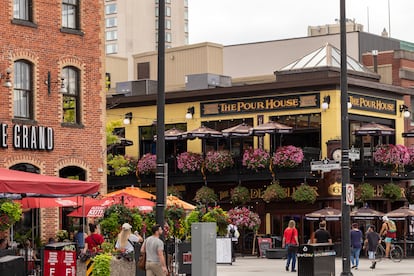
On the other side of the Rideau from Parliament is the great ByWard market, with its shops, cafés and restaurants, whose high season is between May and October, and the National Gallery of Canada. The latter may not be as relevant as its peers in Montreal and Quebec, but it does house interesting pieces (like the Louise Bourgeois spider that welcomes visitors), fabulous viewpoints (the building was designed by Moshe Safdie) and a good collection of Indigenous and Canadian art. Here, one will find the work of two essential creators who are difficult to find in U.S. and European museums: filmmaker and experimental musician Michael Snow and Joyce Wieland, whose 1960s reflections on the maple-leaf flag and what it means to be Canadian in the shadow of the United States have taken on unexpected relevance.
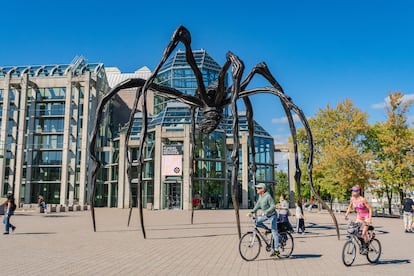
4. Toronto, half a century at the top
The train’s final stop is in Canada’s most-populated city (at 2.7 million residents) and the country’s economic heart. The modern and multicultural Toronto is also the capital of Ontario, the province with the most to lose in a U.S. trade war. To the south, Trump’s tariffs have put the future of the automotive industry at risk. In Toronto, the last thing the city needs — in light of its housing and cost of living woes, as well as the fact that the Maple Leafs have once again failed to bring the national league hockey trophy home — are the U.S. president’s threats to put a 100% tax on movies filmed outside the United States. The city, with the help of its famous film festival that takes place in September, has sold itself for years as a cheaper set than New York City. Not to mention, more versatile: one of Toronto’s virtues is that it can pass for other cities, although once you get past surface appearances, it’s clear that in reality, it only resembles itself. To get an idea of that, it’s always a good option to climb its communication tower. Not to mention that this year. the CN Tower is celebrating the 50 years that have passed since, at 18,100 feet high, it became the tallest extended structure in the world, a position it occupied until 2010, when it was beat by the Burj Khalifa Tower in Dubai. The best view of the city skyline may be had by taking a short trip to “the island”, located across Lake Ontario. A ferry is the best way to make the journey.
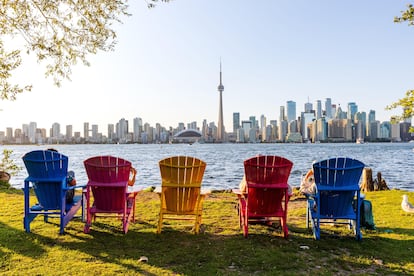
Opportunities for shopping and taking a culinary trip around the world — from Caribbean food at Patois to the Indian plates of Roti Mahal — can be found on Queen Street and the slightly calmer Dundas West, home to the Art Gallery of Ontario. That facility features an exhibition on Latin American photography until October 19 and is a gem among the city’s museums, though it’s certainly worth making time for the others: the Royal Ontario Museum and Casa Loma. The latter is actually a Gothic Revival-style castle that was built by the wealthy Sir Henry Pellatt to fulfill his childhood dream of living in a medieval fortress.

The same fairy-tale atmosphere can be felt at the University of Toronto, whose campus offers academic respite from the hustle and bustle of the city. In recent weeks, it has also become refuge for Timothy Snyder, Marci Shore and Jason Stanley, three Yale professors and scholars of fascism who have opted to move to Toronto. Given the current direction of Washington with Trump at its helm, and his threats to U.S. academic freedom, the three decided to put some distance between themselves and their home country. Canada is their first port of call.
Sign up for our weekly newsletter to get more English-language news coverage from EL PAÍS USA Edition
Tu suscripción se está usando en otro dispositivo
¿Quieres añadir otro usuario a tu suscripción?
Si continúas leyendo en este dispositivo, no se podrá leer en el otro.
FlechaTu suscripción se está usando en otro dispositivo y solo puedes acceder a EL PAÍS desde un dispositivo a la vez.
Si quieres compartir tu cuenta, cambia tu suscripción a la modalidad Premium, así podrás añadir otro usuario. Cada uno accederá con su propia cuenta de email, lo que os permitirá personalizar vuestra experiencia en EL PAÍS.
¿Tienes una suscripción de empresa? Accede aquí para contratar más cuentas.
En el caso de no saber quién está usando tu cuenta, te recomendamos cambiar tu contraseña aquí.
Si decides continuar compartiendo tu cuenta, este mensaje se mostrará en tu dispositivo y en el de la otra persona que está usando tu cuenta de forma indefinida, afectando a tu experiencia de lectura. Puedes consultar aquí los términos y condiciones de la suscripción digital.
More information
Archived In
Últimas noticias
Reinhard Genzel, Nobel laureate in physics: ‘One-minute videos will never give you the truth’
Pinochet’s victims grapple with José Antonio Kast’s rise in Chile
From digital curfews to blocking apps: How technology experts protect their children online
Why the price of coffee has skyrocketed: from Brazilian plantations to specialty coffee houses
Most viewed
- Pablo Escobar’s hippos: A serious environmental problem, 40 years on
- Why we lost the habit of sleeping in two segments and how that changed our sense of time
- Trump’s obsession with putting his name on everything is unprecedented in the United States
- Charles Dubouloz, mountaineering star, retires at 36 with a farewell tour inspired by Walter Bonatti
- The Florida Keys tourist paradise is besieged by immigration agents: ‘We’ve never seen anything like this’


